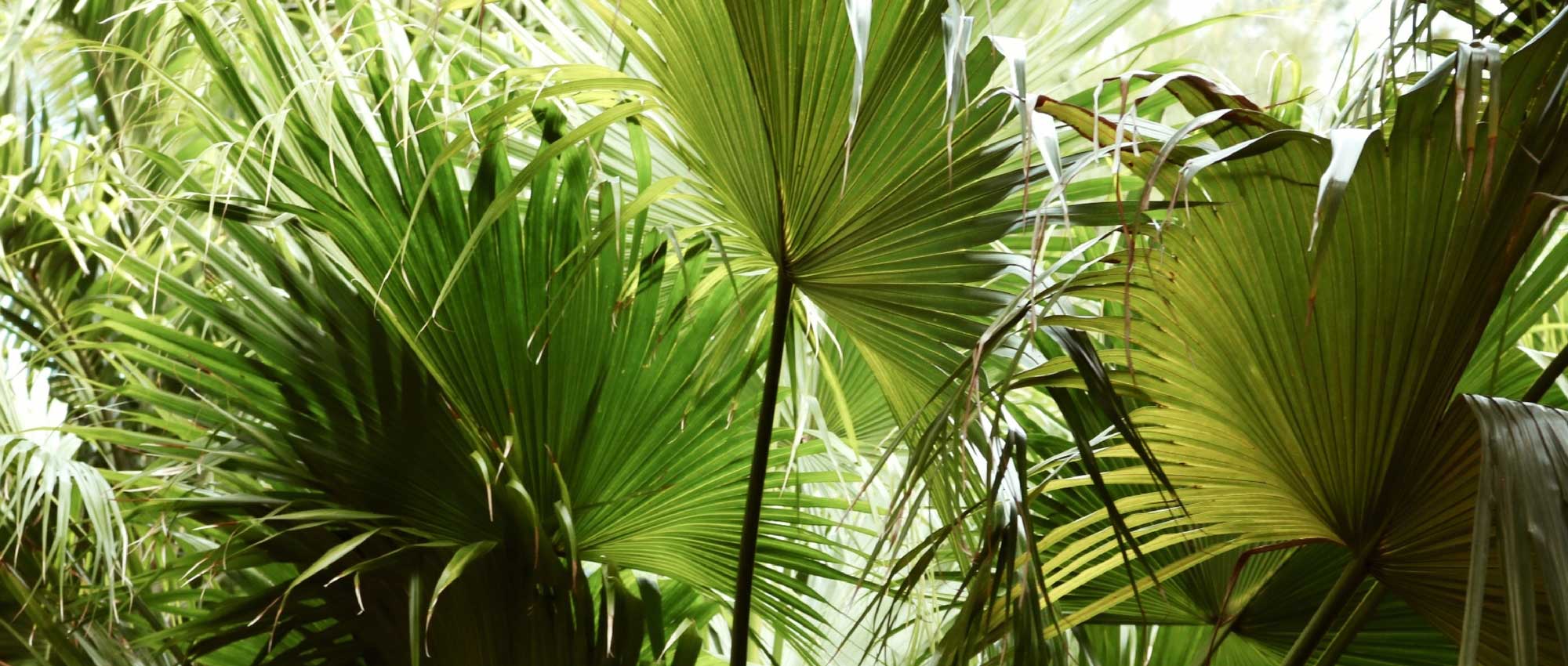
7 hardy palms to plant almost anywhere in France
To create an exotic garden!
Summary
No need to live on the Côte d’Azur to enjoy the exotic appeal of a beautiful palm! Indeed, several varieties are quite cold-hardy and adapt to planting in open ground in much cooler regions. Among them, notably Trachycarpus fortunei, Sabal minor, and the Chilean wine palm, Jubaea chilensis. These palms will surprise you with their hardiness! However, hardiness also depends on growing conditions: to help your palm tolerate cold better, plant it in full sun, in well-drained soil, and in a location sheltered from cold winds. They do not like soils that retain water in winter. Similarly, recently planted young plants are more vulnerable, so it can be useful to protect them during the first three years. Discover the best cold-hardy palms!
Rhapidophyllum histrix
Native to southeastern United States, Rhapidophyllum histrix is hardiest palm, as it tolerates temperatures between −20 and −25 °C! Commonly called porcupine palm or needle palm, its stipe is covered with long thorns! It is a cespitose palm, forming a clump with a rather untidy habit – leaves seeming to grow in every direction – yet very natural! It remains relatively compact, not exceeding 2.5–3 metres in height. Leaves borne on long petioles, they are palmate and divided almost along entire length of lamina, which makes them quite supple. It particularly appreciates shade, as well as rich, fresh soils. This species is ideal for creating a jungle garden!
You may also read
Palms: Planting, Growing, and Caring for ThemTrachycarpus fortunei
Native to mountainous regions of China, Japan and northern India, the Hemp palm or Chinese windmill palm is a relatively easy species to grow, and indeed one of the most popular palms! Very hardy, it can withstand down to −18 °C. It forms an upright stipe, covered with interlaced brown fibres, giving it a handsome rustic, natural appearance. At top of stipe unfolds a crown of palmate, fan-shaped leaves up to 1 m across. It favours soils that remain cool in summer, and although it likes sun, it also grows in partial shade.
To succeed in growing it, see our fact sheet dedicated to Trachycarpus or Hemp palm.
Discover other Palm trees
View All →Available in 5 sizes
Available in 1 sizes
Available in 1 sizes
Available in 4 sizes
Available in 1 sizes
Available in 1 sizes
Available in 1 sizes
Available in 1 sizes
Available in 2 sizes
Available in 2 sizes
Sabal minor
Sabal minor is a dwarf palm native to the southern United States, reaching no more than 2 metres in height. It forms a short, partially buried stipe, giving the impression that the leaves emerge directly from the soil. Its leaves are palmate, very slightly plicate, and have a stiff, rigid appearance. They display a lovely colour ranging from dark green to blue. It is an easy palm to grow and relatively undemanding. It prefers shade or partial shade but also grows in full sun. However, it is not tolerant of strong winds. In the garden, plant it in the shade of larger palms. Regarding its hardiness, it can withstand temperatures down to −18 °C.
You may also read
Chamaerops, dwarf palm: planting, growing and careJubaea chilensis
Chilean Wine Palm is a majestic palm with pinnate leaves. It has a grey, massive stipe, slightly flared at the base, evoking an elephant’s foot, which makes it very imposing. Its stipe at the base of the trunk can reach up to 5 metres in circumference! At the top, a crown of pinnate leaves unfolds, reaching up to 4–5 metres in length. They give it a very different look from other palms commonly seen in gardens. It is, moreover, the hardiest pinnate-frond palm! It tolerates down to -15 °C. In the wild it grows in dry, rocky media in Chile, from the foot of the Andes up to 1,500 metres altitude. In the garden it will thrive in full sun, in well-draining soil. It grows quite slowly, especially during its early years.
Trachycarpus wagnerianus
Native to Asia, Trachycarpus wagnerianus, also called Dwarf Chusan palm, is a very hardy and resilient palm. It resembles Trachycarpus fortunei, but is slightly smaller, with firmer, smaller leaves. It therefore bears handsome palmate leaves, which do not exceed 60 cm in diameter. They are attached to the trunk by long petioles, and consist of elongated, pointed segments fused together up to halfway along the lamina. The stipe of Trachycarpus wagnerianus is also covered with brown fibres, and at ripeness it reaches 6 to 7 metres in height. Regarding its hardiness, it can withstand down to −17 °C.
Chamaerops humilis
Chamaerops humilis is a small cespitose palm that forms clumps made up of several stipes, as it can easily produce new shoots at the base of the trunk. In general it does not exceed 3.5 metres in height and grows quite slowly. At the top of the stipes unfold beautiful palmate, fan-shaped leaves, borne on thorny petioles. It tolerates down to -12 °C if soil is well-draining. It is the only palm naturally found in Mediterranean basin. It naturally grows in dry, poor, sandy or rocky soil. In the garden, plant it in full sun! It is easy to grow and also adapts to container growing.
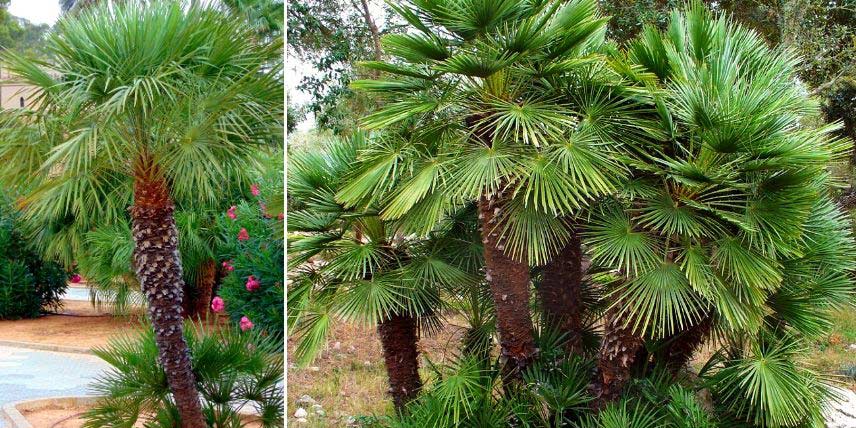
Chamaerops humilis is a small palm that forms clumps made up of several trunks! (photo on right: H. Zell)
Discover our full profile on the Chamaerops or dwarf palm!
Brahea armata
Mexican blue palm, or Brahea armata, is a superb palm with fan-shaped leaves of a beautiful bluish-grey colour. Its leaves have a stiff appearance and are costapalmate (palmate with a central axis). Native to arid regions of Mexico, this palm enjoys full sun as well as poor, stony or sandy soils. Thus, it tolerates -12 °C in well-drained soil, but will be more tender if soil is wet, as it hates excess water in winter. It proves resistant to summer drought. It grows slowly but can reach up to 15 metres in height. Brahea armata is an architectural palm that will pair wonderfully with perennials with blue or silver leaves.
Learn more
To learn all about palms, discover our other tips :
- Subscribe!
- Contents
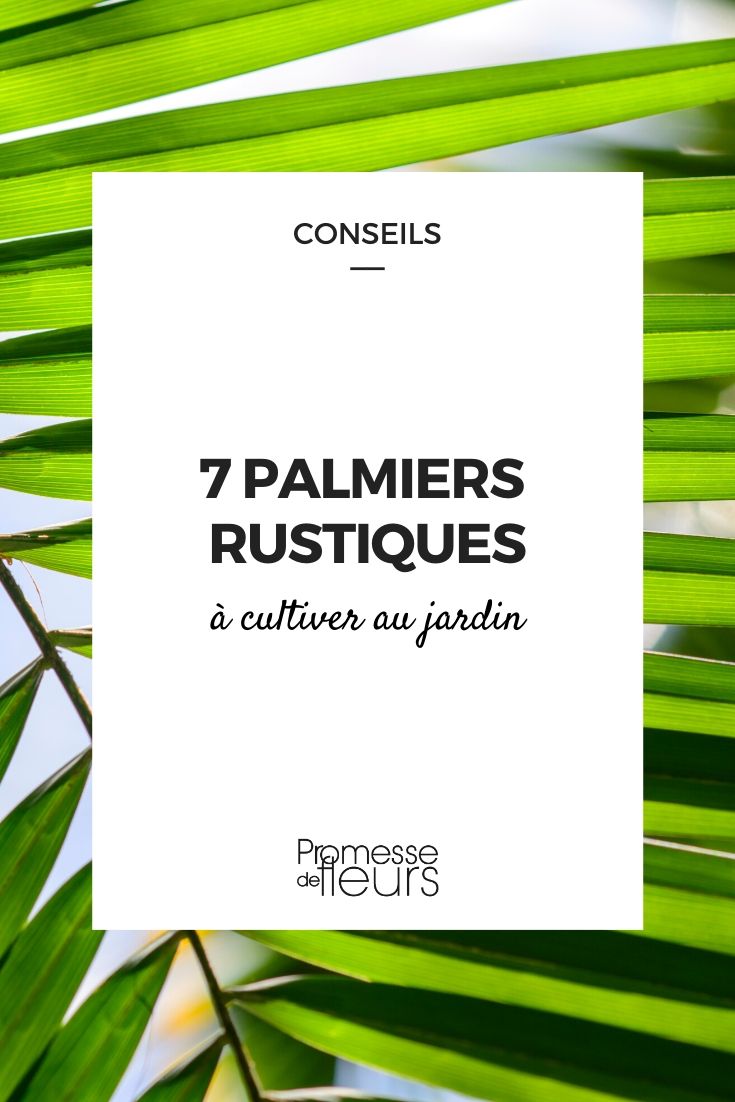































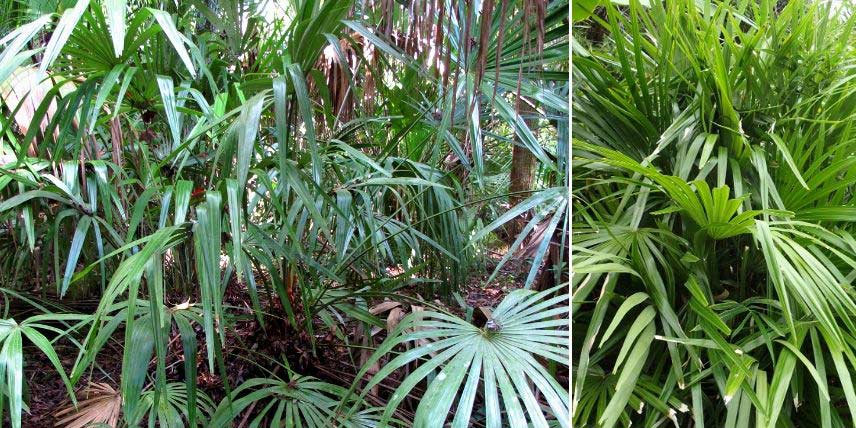

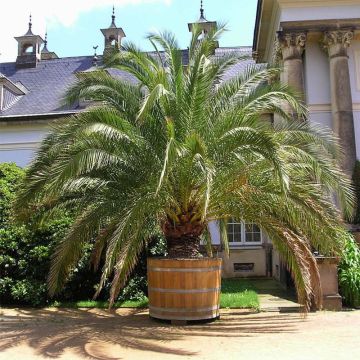

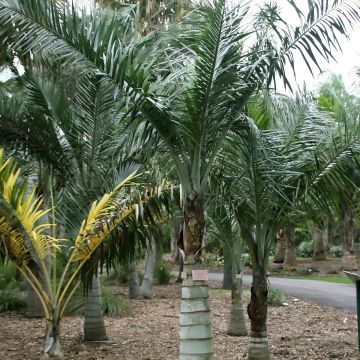
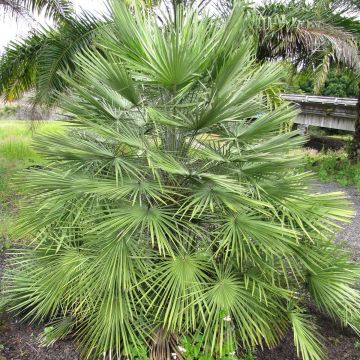
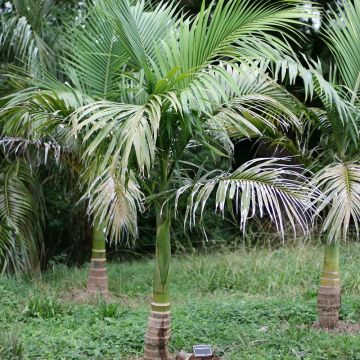
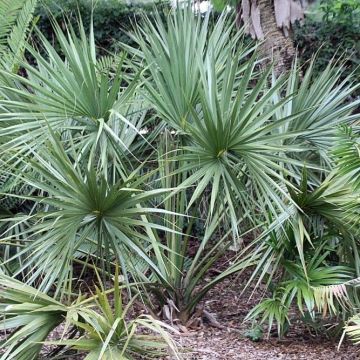
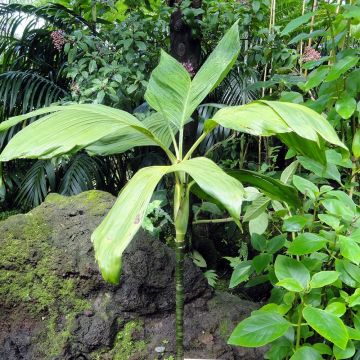
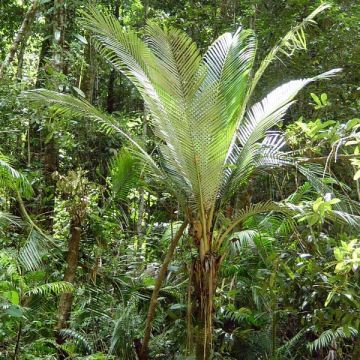
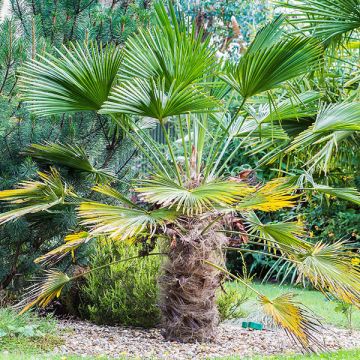
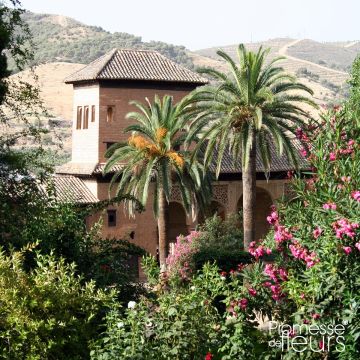

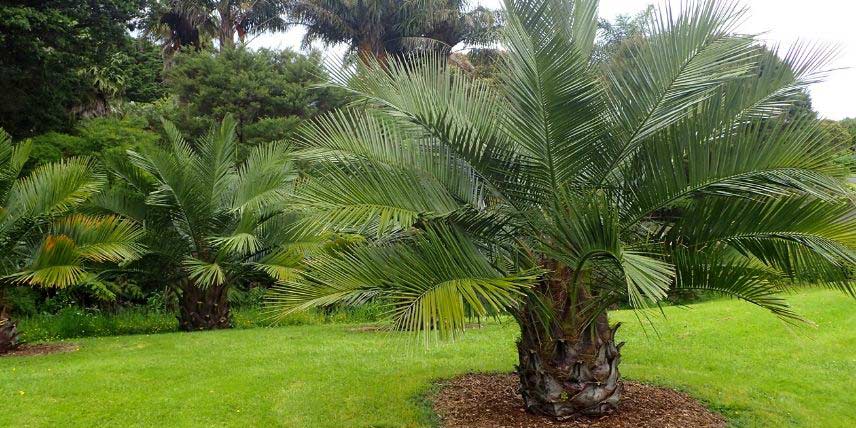
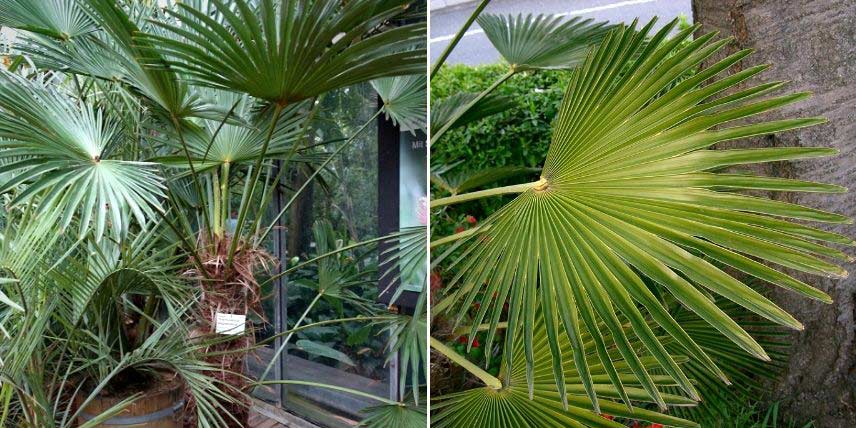

Feedbacks